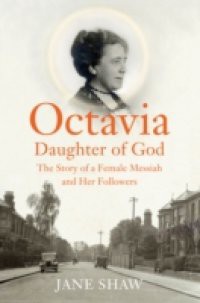In 1919, in the wake of the upheaval of World War I, a remarkable group of English women came up with their own solution to the world's grief: a new religion. At the heart of the Panacea Society was a charismatic and autocratic leader, a vicar's widow named Mabel Bartlrop. Her followers called her Octavia, and they believed that she was the daughter of God, sent to build the New Jerusalem in Bedford.When the last living members of the Panacea Society revealed to historian Jane Shaw their immense and painstakingly preserved archives, she began to reconstruct the story of a close-knit utopian community that grew to include seventy residents, thousands of followers, and an international healing ministry reaching 130,000 people. Shaw offers a detailed portrait of Octavia and describes the faith of her devoted followers who believed they would never die. Vividly told, by turns funny and tragic, Octavia, Daughter of God is about a moment at the advent of modernity, when a generation of newly empowered women tried to re-make Christianity in their own image, offering a fascinating window into the anxieties and hopes of the interwar years.

